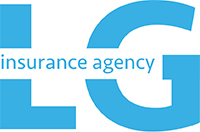As a business owner, you are aware of the many risks that come with running a company. From natural disasters to liability claims, there are countless potential hazards that can threaten your bottom line. That’s why it’s essential to have a plan in place to manage those risks and protect your business. One key aspect of risk management is understanding the total cost of risk (TCOR) and how it impacts your company. In this blog post, we’ll explore what TCOR is, why it’s important, and how you can use this knowledge to better manage risks and reduce costs for your business.
Definition of TCOR
The total cost of risk (TCOR) is a measure of the total financial impact of risks faced by a business. It includes not only the direct costs of insurance premiums, but also indirect costs such as loss adjustment expenses, legal fees and settlement costs, medical expenses, and the cost of self-insurance. In other words, TCOR is the sum of all costs a business incurs as a result of risks it faces, including the cost of transferring those risks through insurance.
Importance of TCOR
By understanding and managing TCOR, businesses can more effectively allocate their resources to mitigate risks and reduce the overall financial impact of those risks. This can help businesses to remain financially stable and sustainable over the long term. By having a clear view of the total cost of the risks that their business is exposed to, companies can budget for it, and make strategic decisions about their risk management.
Examples of TCOR
Some common examples of risks that can contribute to TCOR include property damage, liability claims, and employee injuries. For example, a natural disaster that damages a business’s property can lead to significant repair costs. A liability claim from a customer who is injured on the business’s premises can lead to legal fees and settlement costs. An employee who is injured on the job can lead to medical expenses and lost productivity.
Factors that can impact TCOR
There are several factors that can impact TCOR, including the type and severity of risks faced by a business, the effectiveness of risk management strategies, and the cost of insurance coverage. For example, a business in a high-risk industry, such as construction or manufacturing, may face a higher TCOR than a business in a lower-risk industry. Similarly, a business that has poor risk management practices in place may face a higher TCOR than a business with a robust risk management program.
Ways to manage TCOR
There are several steps businesses can take to manage TCOR, including implementing risk management strategies and taking advantage of discounts and other cost-saving opportunities. For example, implementing safety procedures can help to reduce the likelihood of accidents and injuries, which can lower TCOR. Shopping around for insurance coverage can help businesses to find the most cost-effective coverage for their needs. And taking advantage of discounts for safety equipment or industry associations can also help to lower TCOR.
Risk management strategies
Risk management strategies are an essential aspect of managing TCOR. Some examples of risk management strategies include implementing safety procedures, conducting regular risk assessments, and having a crisis management plan in place. For example, implementing safety procedures such as regular safety training, equipment maintenance, and safety drills can help to reduce the likelihood of accidents and injuries, which can lower TCOR. Conducting regular risk assessments can help businesses identify potential hazards and take steps to mitigate them before they lead to costly claims. Having a crisis management plan in place can help businesses respond quickly and effectively to unexpected events, such as natural disasters or pandemics, minimizing the overall impact on the business. Additionally, businesses can also consider hiring a risk management professional or consulting with a risk management firm to assist in identifying and mitigating risks. This can be a cost-effective way to improve the overall risk management strategy of a business and lower the TCOR.
Conclusion
In conclusion, total cost of risk (TCOR) is a crucial metric for businesses to understand and manage. By having a clear view of the total cost of the risks that their business is exposed to, companies can budget for it, and make strategic decisions about their risk management. By implementing effective risk management strategies and taking advantage of discounts and other cost-saving opportunities, businesses can reduce TCOR and protect their bottom line. Ultimately, managing TCOR is essential for ensuring the long-term financial stability and sustainability of any business. It requires a holistic approach and an understanding of the various costs and risks involved in running a business. With the right approach and tools, businesses can effectively manage their risks, minimize their costs, and secure their future.


